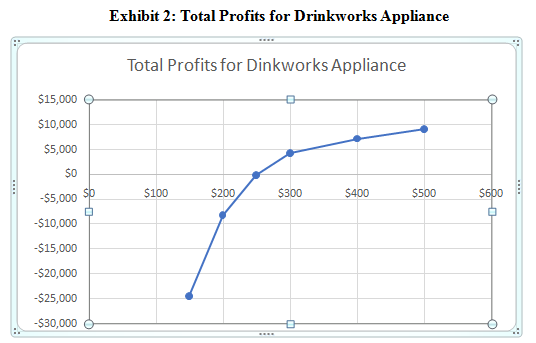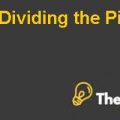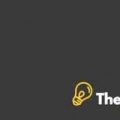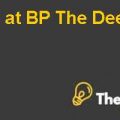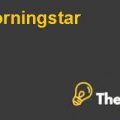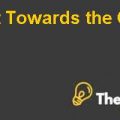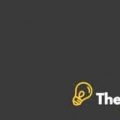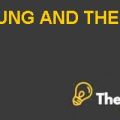Drink-works: Home Bar by Keurig Case Study Solution
Individuals who only drink once a month and also like to invite people to join them made up only 10% of the entire customer segmentation. These people usually consist of middle age men or women, who prefer quality drinks only and they only like to party on occasions.
Drinkers who like to have a glass or two every week but never invite people over made up 12% of the customer segmentation. These people prefer free time and convenience.
Social Infrequent Spirit Drinkers is a group of individuals who do not prefer spirit but instead enjoy wine or beer. They are socially active individuals and they drink inside the comfort of their home or outside when partying. This group made 17% of the customer segmentation. The remaining 27% of the customer segmentation consists of individuals who are less frequent drinkers and also do not enjoy socializing. The research study conducted by Drinkworks also indicated that 9% of the non-social infrequent drinkers and 39% of the youngsters who are weekly drinkers and also hosts parties were interested in purchasing a $199 home-based bar machine with $4 pods. From these results, we can conclude that individuals who like to invite friends over for a drink will enjoy this product and will purchase the product as well. In 2017 October, the company Drinkworks again researched to identify the benefits customers might get if they enjoyed drinks at home. After this study, it was concluded that the customers found the products Drinkworks to be convenient and innovative. Most of the study participants associated the product with positive emotions and relaxation. Only 12% of the participants preferred drinking out, rather than drinking at the comfort of their home.
By launching the Drinkworks Home Bar device, the company intended to target the customers who always want to enjoy new experiences and things. The company also targets hosts who want to create niche cocktails for their relatives, friends, and family at home. Additionally, the product seems to boost the confidence of the customers and help a host to have more control.
Referring to Exhibit 2 provided in the case, it can be seen that the percentage consumption of beer, hard cider/lemonades, and red or white wine of host and weekly drinkers is 92%, 45%, and 75% respectively which is highest among other customer segments. They seek to explore new and innovative things and love to set up experience while hosting.
Financial analysis
According to the research data that has been collected by the surveyors for the new offering in the market with the name of Drinkworks Appliance who will an easy made cocktail machine with a lot of other benefits, it has been identified that when the company will set the price of the cocktail around 149 United States dollars then the 10.5 percent individuals from the 2300 participants are willing to buy this device. In addition to this, if the company will set the price of the cocktail around 199 United States dollars then the 6.9 percent individuals from the 2300 participants are willing to buy this device which shows a rapid decrease in the willingness to purchase of around 35 percent as compared to an increase in price of around 33.5 percent.
Furthermore, if the company will set the price of the cocktail around 249 United States dollars then the 4.7 percent individuals from the 2300 participants are willing to buy this device which shows a rapid decrease in the willingness to purchase of around 32 percent as compared to an increase in price of around 25 percent. In addition, if the company will set the price of the cocktail around 299 United States dollars then the 3.8 percent individuals from the 2300 participants are willing to buy this device which shows a decrease in the willingness to purchase of around 19 percent as compared to an increase in price of around 20 percent.
In addition to this, if the company will set the price of the cocktail around 399 United States dollars then the 2.1 percent individuals from the 2300 participants are willing to buy this device which shows a rapid decrease in the willingness to purchase of around 45 percent as compared to an increase in price of around 33 percent. At last, if the company will set the price of the cocktail around 499 United States dollars then the 1.6 percent individuals from the 2300 participants are willing to buy this device which shows a decrease in the willingness to purchase of around 24 percent as compared to an increase in price of around 25 percent.
By using this market research analysis, it has been finding out that how many participants are willing to purchase the device at the different ranges. By using just revenue analysis is not suitable for the company because according to the revenue perspective, the lowest price range 149 United States dollars are providing the highest revenues but the company’s variable cost is 250 United States dollars which is higher than the price of the device. That is why this price will not be considered. In addition to this, it has been finding out that the highest contribution margin will maximize the company’s profits. The highest contribution margin of the company will be at the price of the 499 United States dollars in which the contribution margin will be 50 percent of the price of the product. This 5 percent contribution margin provides the highest profit to the company of around 9000 United States dollars.
Recommendation
Taking into consideration the analysis, the company is recommended to sell the product through its website or e-commerce due to the increasedadvantages such as the huge potential for sales, better cash flows, and higher margins, less time-intensive, lower setup and running cost, and so forth. Additionally, to deal with the issue that the customer would not be willing to spend money on purchasing innovative products without-seeing or touching them, the company must use a display advertisement and blogger advertisement. In doing so, the company would be able to help customers make an informed decision about purchasing the product.
Besides, the company must sell appliances at $499 because of increased profit returns and a high contribution margin. By selling products at $499, the company would be able to gain a 50% contribution margin. Also, the company must sell non-alcoholic pods to the customers due to the reason that it would not need to any face regulatory opposition &customers would be able to add alcohol of their preferred choice and quantity.
Conclusion
Drinkworks is a joint venture of Keurig and ABI. CEO Nathaniel Davis of Drinkworks in the summer of 2018 had to make critical decisions before launching a new product in the market. The pod-based appliance is designed for making a broad array of cocktail drinks, beer drinks, and sparkling drinks at the push of a button. The product is valuable and the chances of customer-acceptances is high because it is fancy, sophisticated, trendy, and intriguing. The company must target younger people who like to drink weekly and also hosts parties, made up about 21% of the customer segmentation. These youngsters like to either live alone or with any sort of family.
Exhibit 1: Willingness to Pay for Drinkworks Machine and Pods, 2017
| Drinkworks Appliance | ||||||
| Price | $499 | $399 | $299 | $249 | $199 | $149 |
| % Willing to Pay | 1.6% | 2.1% | 3.8% | 4.7% | 6.9% | 10.5% |
| Number of individuals | 37 | 48 | 87 | 108 | 159 | 242 |
| Revenue | $18,363 | $19,272 | $26,133 | $26,917 | $31,581 | $35,984 |
| Variable Cost | $250 | $250 | $250 | $250 | $250 | $250 |
| Total Variable Cost | $9,200 | $12,075 | $21,850 | $27,025 | $39,675 | $60,375 |
| Total Profits | $9,163 | $7,197 | $4,283 | -$108 | -$8,094 | -$24,392 |
| Cocktail Pods | ||||||
| Price | $6.00 | $5.00 | $4.50 | $4.00 | $3.00 | $2.00 |
| % Willing to Pay | 39.1% | 45.5% | 46.0% | 51.5% | 57.4% | 72.8% |
| Number of individuals | 899 | 1,047 | 1,058 | 1,185 | 1,320 | 1,674 |
| Revenue | $5,396 | $5,233 | $4,761 | $4,738 | $3,961 | $3,349 |
| Variable Cost | $1.20 | $1.20 | $1.20 | $1.20 | $1.20 | $1.20 |
| Total Variable Cost | $1,079 | $1,256 | $1,270 | $1,421 | $1,584 | $2,009 |
| Total Profits | $4,317 | $3,977 | $3,491 | $3,317 | $2,376 | $1,340 |
| Non-Alcholic Mixer Pods | ||||||
| Price | $4.00 | $3.00 | $2.50 | $2.00 | $1.00 | |
| % Willing to Pay | 7.2% | 15.2% | 21.6% | 31.8% | 72.7% | |
| Number of individuals | 166 | 350 | 497 | 731 | 1,672 | |
| Revenue | $662 | $1,049 | $1,242 | $1,463 | $1,672 | |
| Variable Cost | $0.95 | $0.95 | $0.95 | $0.95 | $0.95 | |
| Total Variable Cost | $157 | $332 | $472 | $695 | $1,588 | |
| Total Profits | $505 | $717 | $770 | $768 | $84 | |
| Beer/Cider Pods | ||||||
| Price | $4.00 | $3.00 | $2.50 | $2.00 | $1.00 | |
| % Willing to Pay | 35.3% | 42.0% | 44.5% | 51.7% | 55.1% | |
| Number of individuals | 812 | 966 | 1,024 | 1,189 | 1,267 | |
| Revenue | $3,248 | $2,898 | $2,559 | $2,378 | $1,267 | |
| Variable Cost | $1.10 | $1.10 | $1.10 | $1.10 | $1.10 | |
| Total Variable Cost | $893 | $1,063 | $1,126 | $1,308 | $1,394 | |
| Total Profits | $2,355 | $1,835 | $1,433 | $1,070 | -$127 | |
.......................
This is just a sample partial case solution. Please place the order on the website to order your own originally done case solution.

